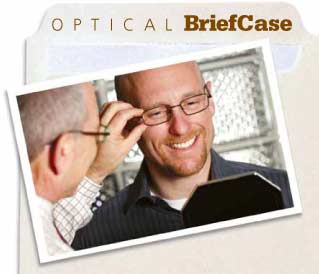
Rob Bell is the president (and head coach) of EyeCoach, an organization designed to teach and coach innovative and industry-specific sales techniques to eyecare professionals. You can contact him at [email protected].
“The easiest way to get what you want is to help someone else get what they need.”
—Deepak Chopra
As a professional sales person, the above quote is my mantra. When someone asks me what “my secret” is, I hand out two business cards. The first card has the above quotation. The second card will be the topic of another column.
But when I broach the subject of sales, especially with eyecare professionals, Chopra’s statement gets lost. Take a moment right now and write down your definition of the word “selling.” We’ll compare our definitions later and see which one works better.
I recently attended a seminar entitled, “How to Sell: The Art of Friendly Persuasion.” Well, that’s a huge problem. Selling has nothing to do with persuasion. One could just as easily call this seminar “How to Charm, Cajole and Manipulate Your Customers Out of Their Money.” I know, that was cynical and not very nice but, let me give an example.
The goal of persuasion, as it was stated in this seminar, is “to convince the audience [patient?] to internalize the persuasive argument and to adopt this new idea as part of their core belief system.”
That talk is setting impractical goals. Ever try to change anyone’s core belief system? Ever had anyone try to change yours? Also, did you happen to notice the word “argument” in the above stated goal? Does anyone ever win an argument?
By way of example, if we were to take the average liberal person and the average conservative person and told the conservative they have an hour to persuade the liberal to substitute the liberal core belief system they have and adopt the conservative core belief system in its place, do you think the conservative would be successful? What if we reversed it? What if we gave them more than an hour? In our country’s 230-year-old history one side “persuading” the other side doesn’t seem to work very often. All I can say for sure is that if the goal is to create an argument, good job. I’m sure one will arise.
So, if a patient comes to your office with a core belief that he or she is just there to purchase one pair of glasses but you are trying to persuade the patient to buy a second pair of glasses and sunglasses too, well, best of luck. This “technique” often fails and leaves both the ECP and the patient very frustrated.
I understand why ECPs shy away from “selling” as we have come to know it and have been trained to learn it.
Well, I promised you my definition. Here it is, in industry-specific terms:
Selling is the process in which the ECP helps a patient acquire all the goods and/or services that would assist that patient to fulfill and overcome their visual needs in exchange for compensation. It comes down to “persuasion” vs. “helping to acquire.” With which would you be more comfortable? And which phrase would you use to describe your occupation when someone asks, “So, what do you do for a living?”
If you’re not sure yet, consider this:
After you have assessed your next patient’s needs ask them one of the following questions,
1) Mr. Jones, would you like me to persuade you now? or
2) Mr. Jones, would you like me to help you with that now? Of course, the choice is up to you.













